#I really researched fashion history for a tumblr post
Explore tagged Tumblr posts
Text
Janet Majors and her need for validation - as seen in “Little Black Dress”

The way that Janet is easily manipulated with praise and validation is very intriguing. It shows that one of the main problems not only in her relationship, but her life in general, is the lack of external praise or affirmation she receives. This can be seen in “Little Black Dress.”
Cosmo purposefully makes her feel seen and desirable with something as simple as making her a dress.
Now, the detail of this dress is important because of the fact that a “little black dress” is often worn to be elegant. The black color is representative of romance and artistry, and the way the song is delivered it seems to rejuvenate with chic fashion representing her more as a “femme fatale” she longs to be rather than an ordinary woman in a failing marriage.
I would also like to point out that in this musical number, Nation states that “that basic black is coming back -“ referring to the fact that in the 1980s casual fabrics for dress and business wear brought the little black dress into style. One can assume that this movie is set then because it was released in 1981, but this line can also be seen to imply that Janet herself sort of rejuvenates the trend of wearing this dress.
The purpose of Cosmo making her this dress was to once again try to make a woman who feels mundane and uncomfortable in her own life feel sexy and form her into her larger-than-life persona that we see later on.
#janet majors#Jessica Harper#shock treatment#shock treatment 1981#shock treatment movie#richard o’brien#patricia quinn#little black dress#I really researched fashion history for a tumblr post#this is my own personal echo chamber#and I will SCREAM about this movie in it
22 notes
·
View notes
Text
❤️🤍💙 #RWRB #RWRBMovie #RedWhiteAndRoyalBlue
Casey being iconic-i just love Them so much!!
#CaseyMcQuiston
. https://twitter.com/ThisIsGSage23/status/1791335511728013403?s=19 .
"I just really wanted to explore both of those characters and I wanted to do it in a way that I hadn't really seen before, and also just like as a queer person I want to make queer art and that's what I'm drawn and that's what I'm interested in. So I kind of had these two different ideas, it was like one idea was that I would write a book about this rebellious first kid who's like figuring out that they're queer and what does that mean for their like political aspirations; and the other was about you know sort of a member of the royal family under all of this pressure to carry on this legacy and like what does that mean if they're gay. Um-And I'm just like kind of weighing these two different stories and deciding where I wanted to go and then I just kind of had this moment of like What If I didn't have to choose and it was the same story because they fall in love with each other? And-Um-You know in a classic bisexual fashion I was like I'm gonna have both, so I did!"
"It was really important to me that Alex was explicitly bisexual because like, you know, I really wanted the representation of like this bisexual character and then it was important to me that he was also Mexican like he is in the book and that he was played by a Mexican actor. (..) It was really important to me that, um, I didn't want any, I didn't want Alex or Henry, no matter how their stories were translated to the screen, I didn't want either of them to have any type of, um, like shame or resentment towards themselves for being queer, it was really important to me that the stakes of their lives and their like inner conflict was much more based on like the circumstances that they're in. It's like they don't hate themselves for being gay-or for being bi-they just wish that it was easier to be who they were in the world that they live in."
"..Taylor embodies that so beautifully. (..) I think he's just killer in that role. And Nick, I mean, if you like turned me upside down and shook me like he would fall out my brain as Henry (..) doesn't have blue eyes but they sure are sad eyes and that is exactly what they need to be."
"I see myself in Alex, tremendously, I'm very much in Alex, I relate to him so much, uh, truly, I think he's the most like me of all my characters."
"I very much would love screenwriting to become part of what I do, I'll say it that way."
youtube
BTW for everyone interested: Red, White & Royal Blue: Collector's Edition Henry PoV bonus chapter by Casey Mcquiston : https://www.tumblr.com/yourartmatters-itswhatgotmehere/752528941905018880?source=share
CMQ spotify (characters' playlists!!) https://open.spotify.com/user/p873j0jdmqn5hye7cakdnub7e/playlists
+ also queer history/facts from RWRB(Alex engaging with queer history)(thank you SO. MUCH. CASEY MCQUISTON!!)-GREAT POST here on tumblr!!-many links here, lots of information! (Waterloo Vase, Stonewall, SCOTUS decision 2015, Walt Whitman, Laws of Illinois 1961, The White Nights Riots, Paris Is Burning, THAT David Wojnarowicz photo 'If I Die Of AIDS-Forget Burial-Just Drop My Body On The Steps Of The F.D.A' https://www.tumblr.com/yourartmatters-itswhatgotmehere/757305651356729344?source=share (I encourage you to research more about David!!) , Thisbe & Pyramus, The V & A, James I & George Villiers and MORE!!) https://www.tumblr.com/yourartmatters-itswhatgotmehere/757308307835895808?source=share (Learning about things referenced in Red, White & Royal Blue, thank you @ elipheleh)
+https://www.vulture.com/article/casey-mcquiston-red-white-and-royal-blue-the-pairing-interview.html
+https://www.hollywoodreporter.com/movies/movie-features/taylor-zakhar-perez-casey-mcquiston-interview-red-white-royal-blue-1235975977/
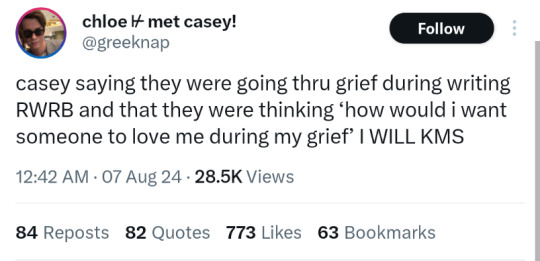

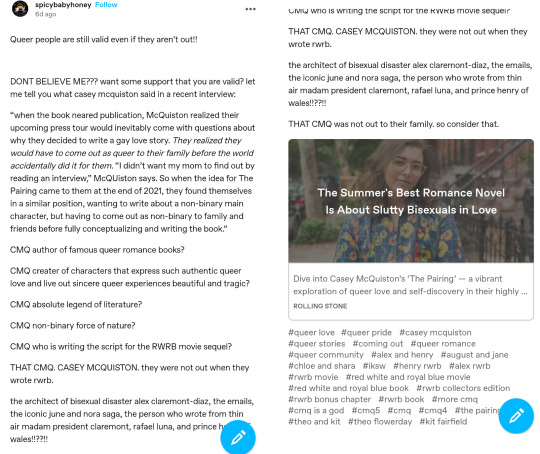
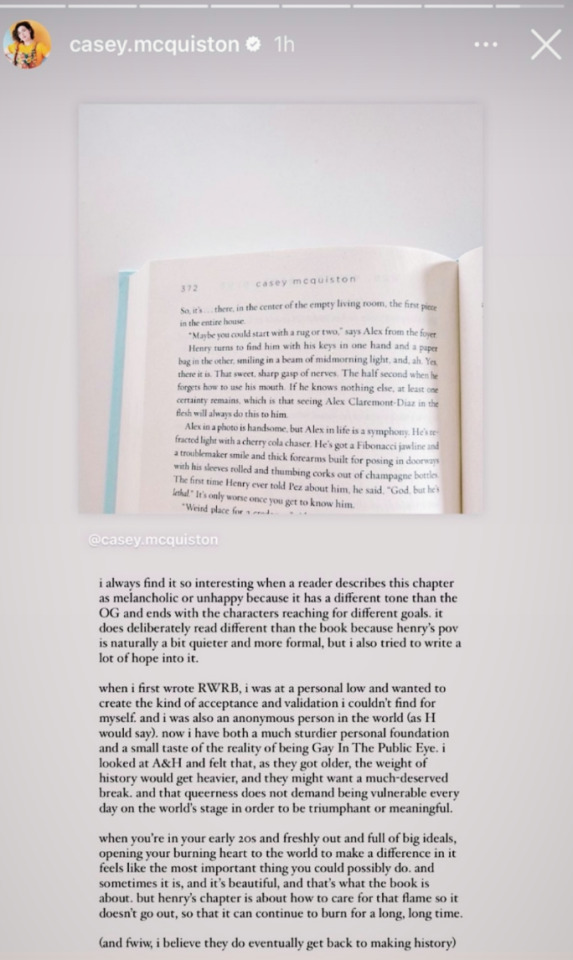
.https://www.tumblr.com/yourartmatters-itswhatgotmehere/758778031058862080?source=share
+
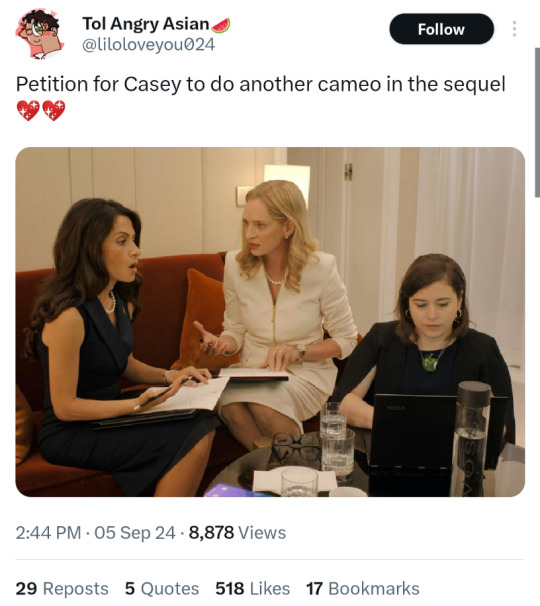
youtube
youtube
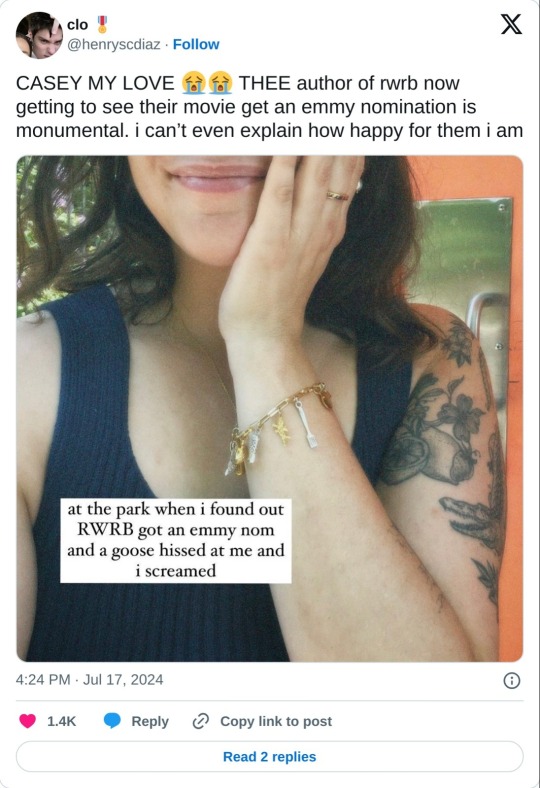
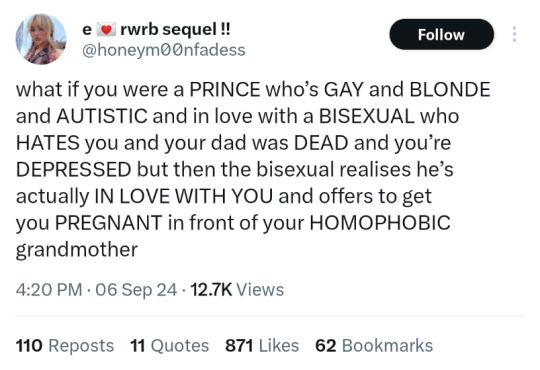
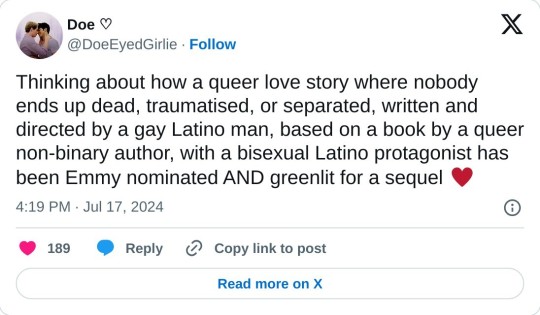




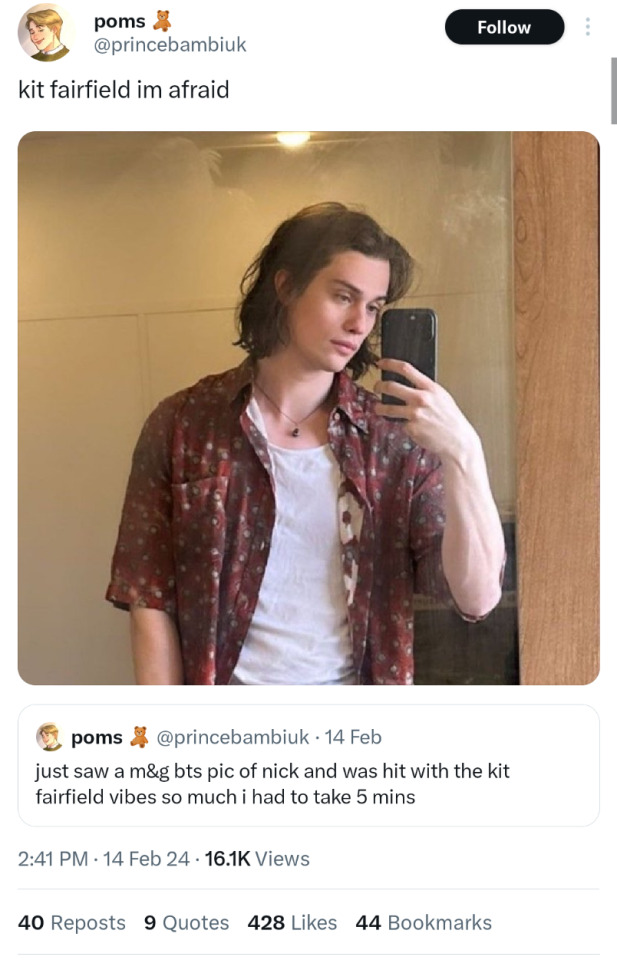
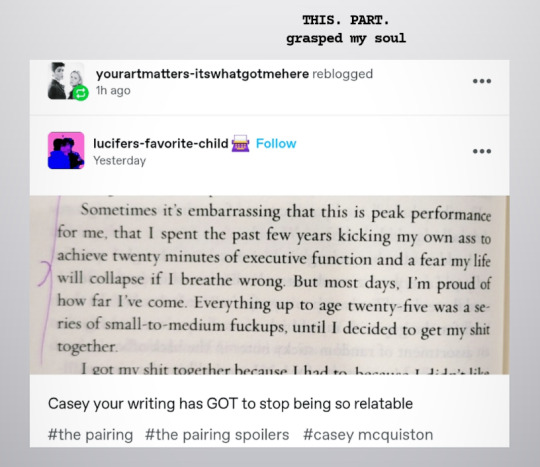
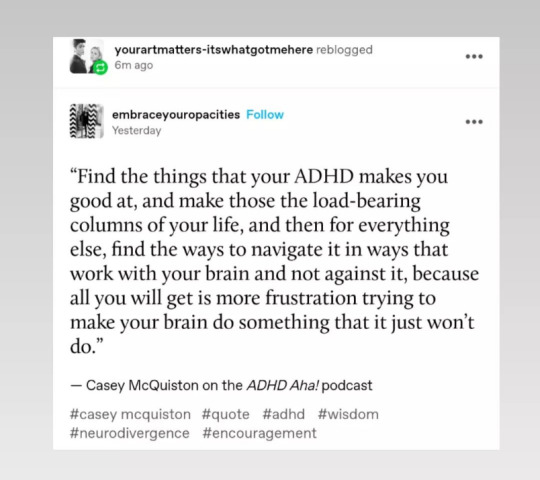
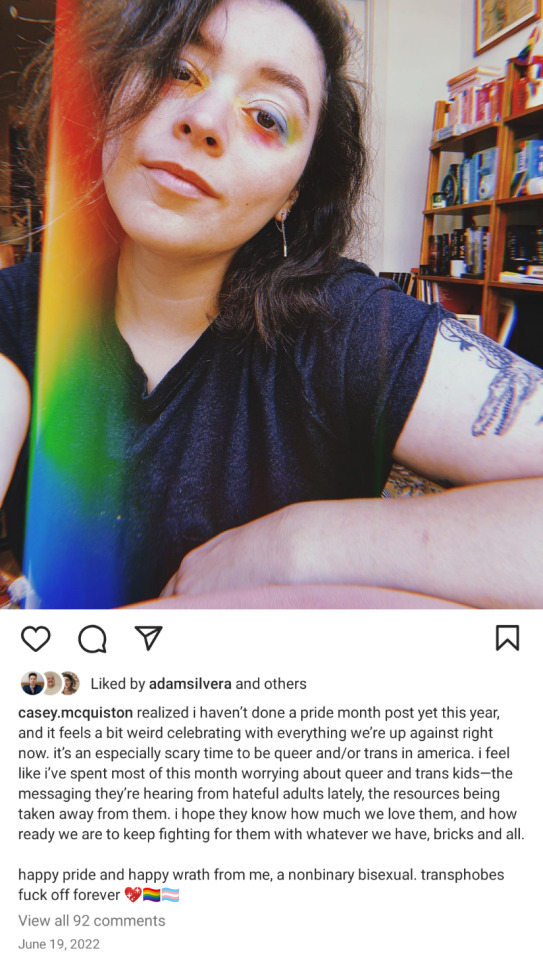

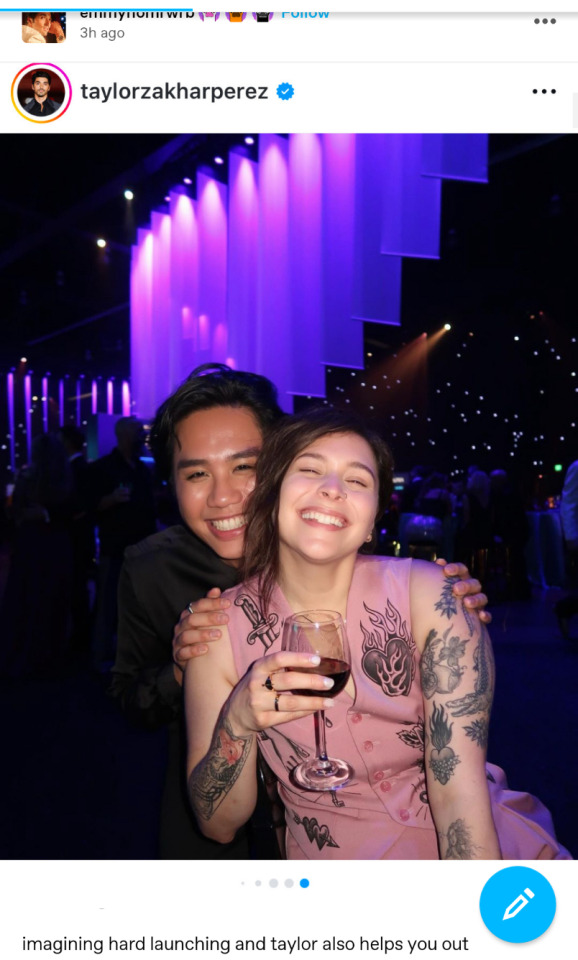
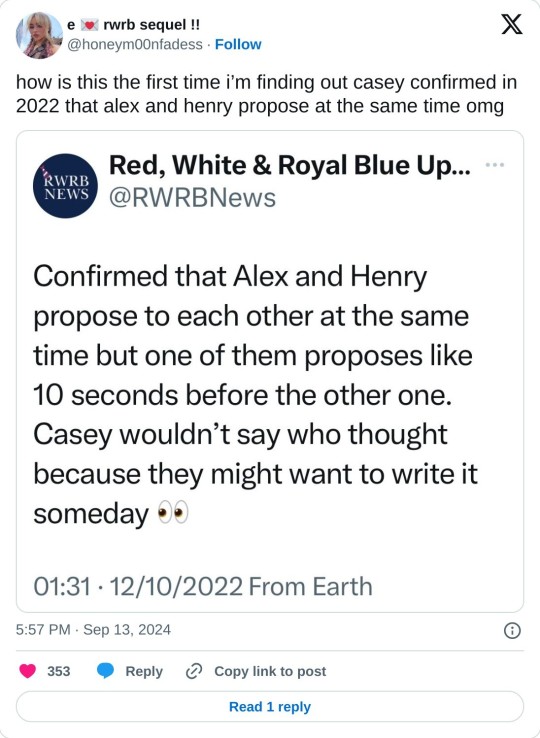
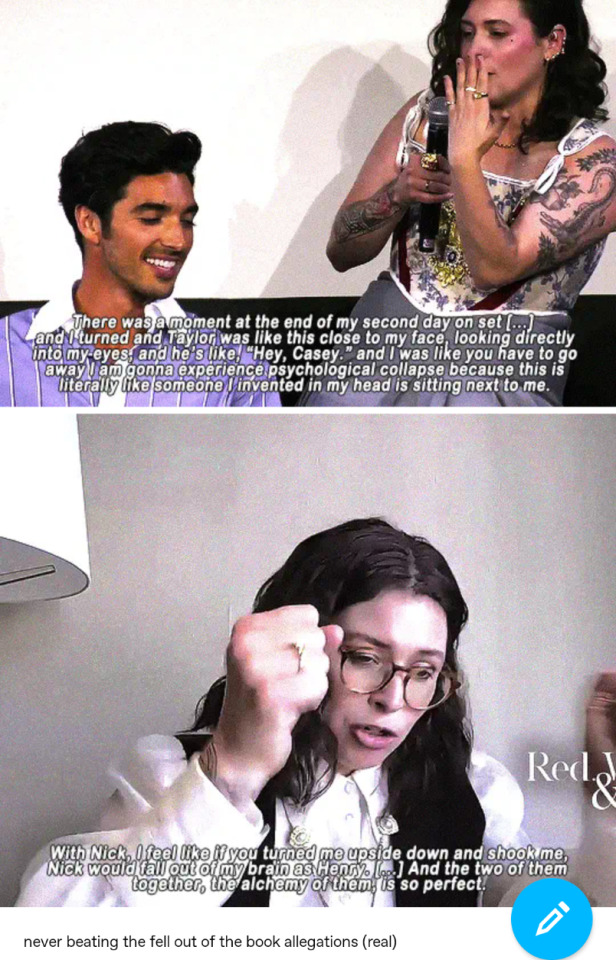
#casey mcquiston#cmq#rwrb#red white and royal blue#rwrb 2#rwrb movie#rwrb 2023#red white and royal blue 2#rwrb sequel#red white and royal blue movie#firstprince#matthew lopez#nick galitzine#nicholas galitzine#taylor zakhar perez#tzp#henry fox#henry fox mountchristen windsor#henry fox x arthur fox#alex claremont diaz#prince henry of wales#prince henry rwrb#nora holleran#cmq is a god#cmq4#cmq5#the pairing#more cmq#kit fairfield#theo flowerday
267 notes
·
View notes
Text
Anyways I was going to make a post about the process of picking bracket topics and whatnot and was trying to come up with some examples of types of topics that would or wouldn't work and for whatever reason I thought of the concept of a "best murderer bracket" and I can't stop thinking about it lmao
it's just like such a funny concept? the idea of fictional murderers battling it out, especially ones from bls (which like I don't think is most people who are not super familiar with the genre as having a lot of characters who have killed people) is just funny in like an absurd way. like abstracting yourself from tumblr and tournament blogs, the idea of telling someone else that there's a tournament going for fictional murderers from east asian mlm tv shows, a genre that for several years was primarily shows about high school and uni students.
anyways that devolved into thinking about it more seriously, and then deciding a more practical way of doing it would to make some kind of directory of bl murderers. which would then lead to a lot of interesting statistical analysis, like characters with highest on screen kill counts, which countries have the highest proportion of fictional killers, etc. you can then make a separate category for characters with implied kills that aren't explicitly shown on screen or vague. and you could track how the number increases over time, which I assume exponentially goes up as more bls are exploring darker and more serious genres.
anyways back to the country stats, I started thinking about what the breakdown would look like so here's my guess based on zero research and just my general knowledge of shows
China. While having very few bls (censored or otherwise), they have a very unfair advantage and that is genre conventions. The 3 biggest Chinese bls I can think of are: The Untamed, Word of Honor, and Guardian. With The Untamed and Word of Honor, the conventions of xianxia and wuxia genres means that there are a lot of characters and almost all of them have killed before (usually nameless canon fodder but still). And then with Guardian, it's a supernatural detective mystery show with murder plots in it and a lot of characters, which again leads to a pretty high kill count. So even only counting these 3 shows, China will probably have the most killers in bl, or at the very least most kills done.
Thailand. It's a numbers game on this one. There's just so many Thai bls and an increasing number of like detective or mafia ones. A show like Kinnporsche has a lot of killers and deaths. Then there's other shows that include a few murderers (but less than Kinnporsche) like The Sign, Manner of Death, 4 Minutes, 3 Will Be Free, Never Let Me Go (Palm did shoot a couple guys dead elt's nto forget), Dead Friend Forever, etc. However the numbers also hurt Thailand in terms of proportions, since there's a lot more Thai bls that don't have murder, so it actually might be 3rd.
Japan. You're not getting much murder from your Cherry Magics and Old Fashion Cupcakes, which is what a significant portion of bl fan's primary exposure to Japanese bl is, but let's not forget that there's a lot of dark Japanese bls where murder is definitely on the table. Now I don't actually have a good gauge of what the numbers on this is, cause I haven't really delved that deep into this corner of the bl market, so I can't make a good estimation but I bet there's more than I'm aware of.
Taiwan. They've got a couple of mafia shows like HIStory 3: Trapped and Kiseki: Dear to Me, both of which have some implied and explicit murder (though less then you would expect if we're honest). That'll give them a few kills and they also have a relatively smaller pool of shows to pull from, meaning percentage wise it's a bit higher.
South Korea. Ok I am far from an expert of bls from South Korea, but unless there's like obscure short films I'm not aware of, the only drama I can think of from here with kills is Long Time No See? or I guess The Director Who Buys Me Dinner has like 1.5 murders? anyways Korea also has a not insignificant amount of bls to their name so proportionally it will be quite low.
The Philippines. Out of all the countries on this list, I am least familiar with the bls from here, but from what I've gathered during my routine mdl searches, basically all of them seem to be murder-free (unless of course there's some shocking plot twists in them)
anyways I'll probably never do this project just cause it would require a lot of time and collaborative effort and I've got a lot irl going on right now (hence why the submission period for most whipped is so long lol) and also have some other projects I'm already planning on doing so I don't really have time to do it. but I wanted to tell y'all about my thoughts on the matter.
also sorry if this is the weirdest thing I've ever posted. kinda had a major stress breakdown today but then resolved it relatively quickly cause I realized I could just reschedule the life altering appointment that was causing the breakdown lmao so I'm in a strange frame of mind lol
#not a poll#like I was walking around looking like some haunted peasant from a dostoevsky novel#and then suddenly was like wait can I reschedule#and I could#and then I thought about this and then made this post#and here we are#get ready for strange posting over the next couple months as high stress levels with a pretty decent dosage of psychiatric meds combine int#unhinged ramblings about bls lol
27 notes
·
View notes
Text
⊱✿⊱✿⊰Intro ⊱✿⊰✿⊰
Hi, I'm eggnoodles. Welcome to my blog :3
⚠️⚠️Warning: I am gender critical/ a terf. I do not hate trans people or wish harm on anyone who is. I wanted to put this warning here because some people may not be comfortable interacting with a blog like that, so if you aren't, keep scrolling. otherwise, welcome to my blog. ⚠️⚠️
���𖡼.𖤣𖥧𖡼.𖤣𖥧
I'm 16, so don't be weird. I'm a girl, I only speak english (sadly). I want to make tumblr friends. I'm autistic and I have ADHD, and I like talking about it because it's a significant part of me. Sometimes I don't make much sense when I post. I'm not part of a specific religion, but I'm questioning my beliefs.
—𖡼.𖤣𖥧𖡼.𖤣𖥧
I have a mini Aussie named ginger (she lives with my mom) and a burmese mountain doodle named Finn (he lives with my dad.) During the school year I board at school, like college, and I want to go to art school when I graduate.
— 𖡼.𖤣𖥧𖡼.𖤣𖥧
I like fashion and sewing, making art (specifically cartoons and comics), collecting random stuff (sonny angels, precious moments, posters, hair clips, etc), animated movies/shows, reading fanfiction, manga, analogue horror, weird internet mysteries, music, and eating sugary food (ice cream will be the death of me).
—𖡼.𖤣𖥧𖡼.𖤣𖥧
🛸 ‘ ° • .’°• 🚀 ✯ ★ * ° ‘ * “🛰 °· 🪐 . • ° ★ • ▁▂▃▄▅▆▇▇▆▅▄▃▁▂. Some media i <3:
SHOWS
° Arcane, Blue Eye Samurai, Vinland Saga, Serial Experiments Lain, Erased, KAIBA MY UNDERRATED FAVV, Attack on Titan, cardcaptor sakura, angel beats, Inuyasha, K-on, Neon Genesis Evangelion, Puella Magi Madoka Magica, School-Live!, Kino's journey, Elfen Lied
MOVIES
°Nausicaa of the valley of the wind, Laputa, Princess Mononoke, Time of Eve, Wolf Children, The Animatrix, The Summer (korean lesbian movie so so underrated), Song of the Sea, Yobi the five tailed fox, Fantastic Planet, Perfect Blue, Millenium Actress, Spirited Away, Grave of the fireflies, Ponyo
° Non-animated: The Virgin Suicides, Thirteen, Juno, All about Lily chou chou, Kamikaze Girls, White Oleander, Ladybird, Jennifers body, pretty much any 70s-90s chickflick i watched with my mom (think Grease or Breakfast Club)
GRAPHIC NOVELS/BOOKS
°Chainsaw man, Oyasumi Punpun, On A Sunbeam, Spinning, Persepolis, Orange, I want to eat your pancreas, Attack on Titan
°Earthlings, No Longer Human, any poetry by Mary Oliver, and... I haven't read much lately give me recs pls ^_^
MUSIC
°Venetian Snares, Goreshit, Aphex Twin, Cynthoni/sewerslvt, 1-800-PAIN, Smashing Pumpkins, Kate Bush, Adrienne Lenker, Jun Togawa, Deftones, RADIOHEAD!!!!, Weezer, Sign Crushes Motorist, Foo Fighters, Nirvana, The beatles, Fiona Apple, Tommy February6, The Cure, L7, Courtney Love, Jack Off Jill, TV girl, Beabadoobee, Boâ, bjork
ARTISTS/OTHER STUFF
I like the art of aya takano, tillie walden, yoshitomo nara, kim jung gi, junko mizuno, si_ku, ken currie, daisuke igarashi, inio asano, gekidan inu curry, I also love analog horror (the tangi virus is my favorite one) and internet mysteries/lost media. Fashion archive/street snaps are really really awesome, I like Fruits magazine and Hel Looks.
My favorite food is french fries and ice cream TIED, but burritos are a close second. And pancakes, oh god... I like winter and fall a lot, because it's close to all the wintery holidays. And i love snow. I like cats a lot, foxes, rabbits, squirrels, caterpillars, MONKEYS AND PRIMATES OMGGGGG, and lots of other animals. I'm interested in really ancient history/civilizations, like Sumer. I like plushies too. And walking around in the woods, or sleeping a lotttt. And just weird stuff like random rabbit holes of research.
I'm questioning my exact political beliefs but I am interested in radical feminism. I do not identify fully with any political movements, I'm still learning.
I may express disagreement for certain ideologies, people, etc but I do not wish harm or ill will upon any such groups. If you disagree with me I am open to some debates but may not engage for long due to my own mental health and priorities. In the end we are all human and deserve a fulfilling life with one another.
I'm also very cringe and pretentious and if you have any feedback on any posts in which i try to say something of substance feel free to share.
I don't have a dni, if you're gross I'll block you. (I give a warning before I block, I won't randomly block you if we've been talking.) i mean, if you're some 4chan dwelling pdf file who wants to spam my asks with yaoi furry foot fetish art, thats an obvious dni, i guess just use common sense...
anyways ya be my friend pls

:3
#intro post#radfeminism#radical feminists do interact#radical feminists do touch#radfemblr#gender critical#terfsafe
23 notes
·
View notes
Note
kinda random question but how do you go about researching? I’ve wanted to get deeper into fashion history than just watching youtube videos, but I don’t really know where to start.
ps. thanks for making such detailed posts. they’re really interesting to read.
Thank you! I'm really glad you've found my posts interesting!
This is great since I've kinda answered this in replies couple of times, but not properly. I very much understand the struggle. Dress history is a relatively new academic field and there's not that much reliable sources available and so so much unreliable sources everywhere. Internet of course has this problem but so does a lot of books too.
I thought this would be a short one and yet, here we are again.
Disclaimer: I'm writing this from a western fashion history perspective, since that's what I know best, but especially reading up on academic research and doing primary source research applies to non-western cultures too, though often it's harder to find sources for non-western fashion.
Getting started
Imo the best place to getting started is to read a book that gives a general timeline of fashion through history. I'm not sure if that's just how my brain works, but it helped me a lot of when going deeper into one period or another to understand the broader context and what roughly came before and what after. However these books are inherently difficult to make well, because there's so much nuance and variation in every period of dress history and if you're writing about the whole timeline through thousands of years and keeping it book length, there will need to be a lot of simplification to the point of inaccuracy. There's many popular fashion history timeline books with illustrations made for the book, but I would avoid those since non-contemporary illustrations often give a distorted image of the fashion, especially when it's about earlier periods in history. I've seen some really inaccurate illustrations depicting Middle Ages and Renaissance especially.
Costume and fashion: a concise history by James Laver - I'd recommend this as the starting point. James Laver was a art historian, an important pioneer of fashion history and curator of Victoria and Albert Museum, which has one of the most extensive costume collections now. The book is therefore based on serious academic study, but being a pioneer means you'll be outdated, when the field is more established, which is partly the case with this book. There's some outdated parts, but the images are primary sources and it does give good historical background. It should be taken as a starting point, not as the end point.
A History of Fashion by J. Anderson Black and Madge Garland - This is another similar book. It's more recent, but it also suffers from some outdated parts. The writers are not academics, but it has more primary source pictures which does help (at least me) understand visually what's being said.
Books
In a given subject I'm researching I usually start with seeing if I can find a reliable book on it or related to it, if I haven't already read much on it. Often what I want to research goes deeper into details than what a book usually does, so it will work as a starting point. As said it can be hard to find these books that are actually reliable, but here's couple of reading lists to help with it.
Here's a reading list by a retired professor of dress history from Helsinki University. It's very extensive and has a wide variety of books and papers listed. There's a bit of leaning towards Finnish sources, but most are in English and about more international western fashion.
Here's a reading list by @clove-pinks, who is excellent and writes a lot about the Romantic period, especially men's fashion here on Tumblr. These are all books that can be read free on Internet Archive, which makes the list even better.
Internet sources
There's a lot of bad sources floating around in the internet, but also some excellent gems. As dress history is such a new field, there's a lot of unexplored spots and lacking research still, but some troopers in the internet have done some great legwork in going through primary sources and gathering them together. These can be excellent especially when trying to research a specific garment, since often these blog posts are by historical costumers, who are detailing their background research in reconstructing a specific garment. It's not always easy to find them, since they might not come up in the first page of the google search, but I often find them through pinterest, where the blogs are linked into the primary source images and images of the reconstructed garments. Though be sure to look with blogs like that with critical eye. The best sign that it's reliable is when each image is given a source.
There's some more general sources too that need to be taken with a grain of salt.
Fashion History Timeline - This is a page with entries to the whole timeline of fashion as well as entries of specific garments. It's very well sourced and has usually pretty good image sources too. I will say though that it often gives a pretty limited description of the period focusing on some specifics, without giving a good overall picture, especially in the Medieval sections. The medieval sections are honestly pretty useless. It's at it's best in 19th century imo (I haven't checked out the entries to 20th century since I rarely research vintage styles, but I'd assume they are pretty good too). But since it has great sourcing it is usually informative. It just shouldn't be relied upon to give full picture of a period.
Wikipedia, History of Western fashion - In some ways this is the opposite of Fashion History Timeline. Wikipedia has articles on each period. The sourcing on these articles is often quite lacking and the information shouldn't be taken at face value. Especially the terms for the garments are often used in these articles in very questionable ways. However what these articles have is pretty good primary source image collections, and what is nice is that in Medieval, Renaissance and Early Modern periods they are often divided into regions, and they often have images of working class clothing, which are for some periods really hard to find. These articles often don't either give a full picture of the period, but in someways the basic picture of the period is easier to grasp from these than from Fashion History Timeline. I use these mostly for the primary source images, and the texts of them should be taken with a bucket of salt.
Academic papers
Going deeper into something will inevitably require reading up on some academic papers. I'm lucky since I get access to a lot of academic publications through my uni, but JSTOR (my beloved) gives free access to 100 papers per month (you'll just have to make an account). Through google scholar you can search for papers on a given subject, or if you don't have access to other publications, you can just use JSTOR's search engine.
Primary sources
If some MVP hasn't already combed through primary sources to gather them on a give subject, you can do that too. It's not necessarily an easy task though. There's thankfully a perfect guide for that.
A Handbook of Costume by Janet Arnold - Janet Arnold was a legendary dress historian, who really defined the modern field. This book details the process of researching dress history and how to analyze primary sources. And it's free on Internet Archives.
I'll give some basics here though.
Extant garment
Most of us who are not academic historians don't have physical access to extant garment, but many museums have nowadays excellent digital archives of their costume collections. Here's a list of the most well known ones. MET and V&A has sometimes great descriptions of the clothing and their history, but not for every item.
MET Costume Institute
Kyoto Costume Institute
LACMA
V&A Costume Collection
Palais Galliera
Extant garments are of course the ideal sources to study, since they are the actual garments and not just representations or descriptions of them. Sometimes the collections even have pictures of the insides of the garments, giving invaluable information about their construction. However, extant garments have limitations for research, since there's a strong survivorship bias. Firstly, they heavily lean on later periods as textiles deteriorate relatively quickly. You won't find extant garments from Middle Ages, at most fragments of them. Secondly, they are mostly clothing of the upper classes. Lower classes used their clothing till they broke down, and even then often salvaged any fabric that could be salvaged for new clothing and other textiles. Upper classes didn't necessarily have to do that, so what survives is usually very expensive formal clothing that people would wear rarely and rather preserve than salvage the fabric from it.
Photography
Since camera was popularized in early Victorian era, you don't get photos before that. Photography is a great source from the times it was available, since yes it's still only representation of the clothing, but there's less artistic interpretation than in paintings and illustrations, though importantly, there still is artistic interpretation. As long as there has been photography, there has been photoediting. They of course used it for creepypasta purposes by editing them holding their own heads and editing ghosts into backgrounds, but also editing their waists smaller. Basically the exact same way photos are still edited. So no, this is not really how small the waist got in Edwardian era, since this is edited.

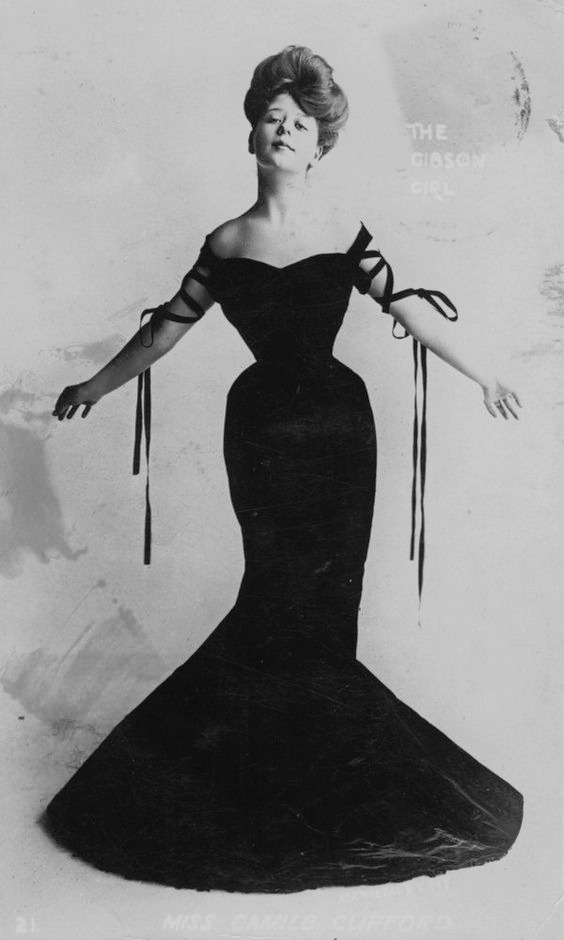
Another obvious limitation for early photography is that it didn't have colors, so popular colors of a given time period and given styles have to be found through other means. A great thing about photography though was that compared to painting, it was relatively cheap, and therefore a lot of lower class people were able to photograph themselves. We even get people outside in everyday situations not posing.
Photography can be found with search engines like google and pinterest, though they should be always sourced then. You sometimes come across very Victorian looking photos that are actually just modern photos that are well edited. And also it's important to date the photos, which might not be easily with photos just randomly floating in the internet. Libraries and museums sometimes have good digital collections of old photos. For example:
Digital collections of New York Public Library (NYPL) - It has a wide variety of collections including photography, fashion plates and other illustrations. I haven't found a great way to search through the collections, but the best way I've come up with is to search images within the Clothing & Dress topic, put some limiting filters, then click some right looking image and then go to the collection it was from. I bet there's an easier way but I haven't figured it out.
Paintings
A great thing about paintings and statues is that they date basically through whole history of organized civilizations. Paintings are more delicate so even with murals in antiquity, you'll get more surviving status from that time period. But because of the strong artistic interpretation inherent to these art forms, there's some tricky parts to them as sources for historical fashions.
You'll find a lot of paintings by just searching for fashion or paintings of a given period in google and pinterest, but it's sometimes tricky to source them to figure out where and when they were painted. Therefore I often check from Wikipedia a list of artists from a given time and place, and search their paintings from digital archives of museums. It also helps when you choose artists who were specialised in specific type of paintings. What kind of paintings depends on what you're researching and the time period.
Portraits are of course great sources. They depict the actual clothing an actual person wore and if the person was historically important enough you can find out who they were and gain a lot of context for the clothing. However, they are usually all rich people, though not always. Another thing to keep in mind is that sometimes portraits portray the subject in a costume. This became a pretty big trend among nobles in 18th century. They had costume parties and would have their portrait painted with their costume, but also there were trends of costume that were not even worn for parties, but only for having a portrait. Sometimes the painting would be painted like a scene and not like traditional portrait. Van Dyke costume (first picture below) in first half of 18th century paintings is one such example. It referred to mid 17th century fashion that was seen as timeless at the time. Peasant costume (second picture below) is another example of a popular costume for nobles to wear in portraits. Costume balls continued to 19th century, but after the popularization of camera they were mainly photographed. People would continue to dress up in costumes for portraits, but it wasn't as big of a trend as in 18th century.
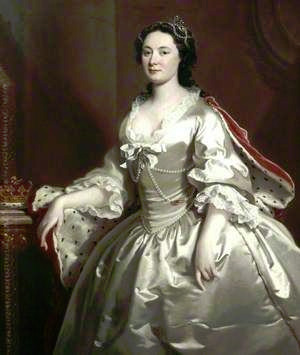
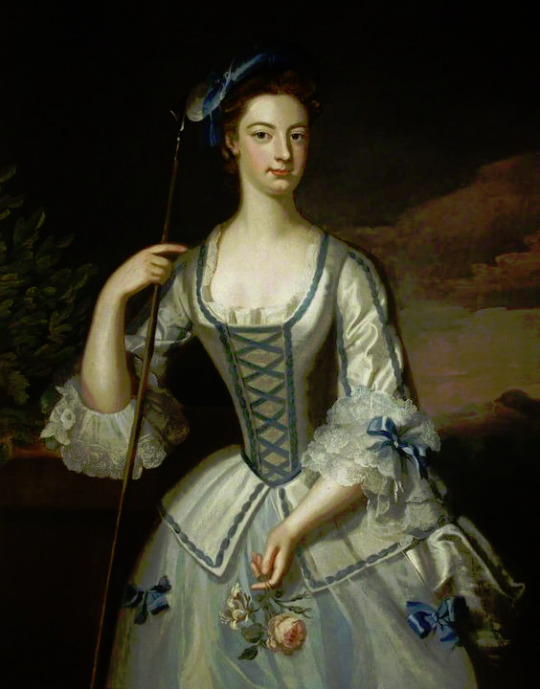
Genre paintings were a genre of paintings that became popular first in 16th century Low Countries and then In Netherlands/Belgium area during the Dutch Golden Age (from late 16th century and thorough Baroque) and during Baroque's popularity all over Europe. Genre paintings depict normal everyday life of peasants, working class people and the bourgeois. During Baroque they often had elements of idealization, symbolism and even sexualization of the subjects, so they should be taken with a grain of salt, but they do usually depict accurately the clothes the people wore. Rococo era had a lot of these types of everyday scenes about the upper class. During the Romantic era peasants were heavily romanticized in genre paintings, but there was also a lot of genre paintings of bourgeois thorough 19th century that was wasn't as strongly romanticized. These scenes were sometimes also depicted in portrait form. Realism brought another interest into the genre and Realistic genre paintings often focused on the working class. They did the opposite of romanticism though and often exaggerated their subjects to look more wretched.
History paintings depict events and scenes that were for the time historical too. They became very popular in 19th century, when Historism was the dominant in arts, but they have existed long before. There's even some from late Medieval period, and in those earlier history paintings, the historical figures are usually depicted in contemporary clothing and there's no attempt at recreating historical styles. In later periods, especially during 19th century Historism they very much tried to recreate historical styles. This is why it's important to always source paintings. I've too often seen Victorian paintings used as images for Medieval fashions.
Religious paintings have sometimes a bit of the same issue. They were very popular during Medieval and Renaissance eras, and usually the biblical figures would be depicted in contemporary fashions, though not always, sometimes in vaguely "biblical garbs". Religious paintings also have the issue of often being highly symbolic, so sometimes the characters in them are not dressed for the situation, or a character that in the biblical canon very poor is depicted in upper class contemporary fashions.
Illuminated manuscripts
Medieval manuscripts with illustrations are invaluable sources for Medieval fashions. They are usually commissioned by royalty and detail historical narratives, so they mostly depict royalty and nobility, but some illustrated scenes depict commoners too. You often find images of the illustrations floating around in pinterest but they can be hard to source when the source is not linked (which is quite often). The illustrations can be spotted by the quite consistent style (though sometimes they are not from illuminated manuscripts but some other rarer illustrations like playing cards).
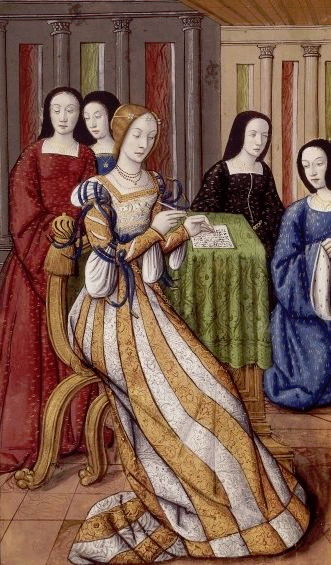

A lot of illuminated manuscripts have been digitized and British and French libraries have quite extensive online collections of them which are linked below. The manuscrips in those are mostly English and French of course but there's manuscrips from other places in Europe too, I've seen quite a lot of the German speaking area especially.
The Bibliothèque nationale de France (BnF) The British Library
Fashion plates
Fashion plates became a thing in 1780s, so they are not useful for periods before that. They are basically illustrations that show the latest trends and they were published in fashion magazines. They don't reflect the way everyone dressed, since as they did show the latest high fashion and the people who would be wearing that were mostly young rich fashionable people. However, fashion at the time had a little different meaning than today as it was linked to dress code, and to be respectable you needed to follow fashion. So everyone, even working class people, would follow the new trends to an extent. This is especially true when we get to Victorian era, when mass industrial mass production and the emerging middle class made clothing cheaper and more available to more people. They wouldn't maybe follow every new trend or with every detail and with as much extravaganza or with the most expensive fashionable materials.
While the fashion plates didn't necessarily depict specific existing clothing, they were based on existing clothing and they were often used as guides for dressmakers. Kinda like you might go to a hairdresser with a picture of a famous person's hair or hairdressers sometimes use pictures of famous person's hair to show what they might do. And the people who might not afford something as extravagant as shown in a fashion plate, might still show it as a guide and get a simpler version of it made for them. People of the middle and lower classes especially would also use them as guides to sew themselves fashionable clothing.
Fashion plates are quite easily found on the internet, but as with other things, if you don't go straight to some organized archive, it might be really hard to date them accurately. Many bigger museums and libraries have fashion plates in their online archives, for example NYPL which I mentioned earlier.
MET Fashion Plate Collection - This is a pretty extensive collection.
Regional costume illustrations
When genre paintings became popular, artists didn't necessarily have the change to go and see what peasants wore in the places they were setting their genre paintings in, but because the whole point of them was to depict authentic real life, there was a need for illustrations of regional dress around Europe. And some artists would travel and create costume collections for resource to other artists. These are really invaluable to us today, though they should always be taken with a grain of salt, because sometimes the artists who created these drew dresses for places they never had even been in. For example some of these collections include non-European dress and they should all be probably disregarded as fantasy costumes basically. You can usually assume that the closer the region which dress they depict is to their own place of origin, the more accurate and based on reality it is. It's also good to try and google the artist and see if you can find information of where they actually traveled, because sometimes we know that pretty well.
These collections can also be found in the digitized archives of big museums and libraries, again there's some in NYPL collections.
British Museum's collections by Hippolyte Lacomte from 19th century
A collection from late 16th century on BnF archives
Honorable mentions
There's many other primary sources in different periods that can be helpful, but the ones I've mentioned are the major ones and easiest to access, when you're not doing academic research with institutional resources. I thought I might mention couple of other sources that have become handy to me as examples.
Magazine and news paper ads became wide spread in the Victorian era and from that onward is a great source. They advertise specifically ready-made clothing, so clothing that was much more available to a regular person and therefore can be really helpful to understand what a regular person might wear. I don't know a great source for them though. Many libraries have digitized old papers and magazines so going through fashion magazines is perhaps the best bet, but it's definitely a lot of combing though. Some people have though gathered ads in blogs.
Satiric comics can be surprisingly helpful for researching sort of alternative styles and seeing what trends garnered backlash. For example I've long been obsessed with Aestheticism and the other counter-cultural movements related to it, and there's quite a lot of women's Aesthetic extant garments, photos and paintings available, but very little of men's Aesthetic fashion. But then I found that Punch Magazine (conservative satire magazine) loved mocking the Aesthetes and therefore drew a lot of comics with men in Aesthetic fashion. Caution should be taken though since satiric illustrations do often exaggerate for comedic effect. For example the idea that 1770s ladies made ships out of their massive hair comes from a satiric illustration mocking the large and elaborate hair of the time.
Runaway ads of slaves and indentured servants are bleak, but can be helpful source for the clothing of poor people during 18th century. This is specific to US, but because of the colonialism poor people there would often wear at least similar clothing as those in Europe, especially Britain and France, which had the most colonial presence in that region. The clothes were described in great detail in these ads for identification purposes. These runaway ads can be also found in news papers of the era, many of which are digitized in archives of bigger US libraries, but it's definitely even more combing through. Though again some people have done some of that work already and documented it in blogs.
190 notes
·
View notes
Note
Heya! Sorry for the random message but I was looking through the bunad tags on tumblr and saw your post on fantastistakk? (I hope I’m spelling that right!!) i was wondering if you had any good resources on learning more about them or could share any more information on them! I’ve always loved norwegian bunads and I’d like to depict them + reference them more in art/writing but with further fantasy themes (hence the even greater fascination with fantastistakk) and have worried about coming across as ignorant when the last thing I want to do is do these wonderful dresses and their history a disservice! (I additionally ask just because when I look up fantastistakk specifically I get a lot of results in norwegian which is fine I just don’t want to end up with inaccurate info putting it through a rough translator online so i thought I’d ask!)
Thank you so much!
Hi and thanks for the ask! Please don't apologize I love talking bunad and fantasistakk :D
I really wish I could paste in a link to the Definitive Guide to Fantasistakk (English Edition), but unfortunately no such thing exists.
Mainly because this is what I would call a Folk Fashion Movement, in the sense that there is no big fashion house or designer* behind it, it consists of regular people digging up their mothers' sewing machines and having fun with learning traditional techniques in a new way. The closest thing you can get to valuable literary resources would be people's personal blog posts and the occasional news article, but they're all written in Norwegian, like you discovered. And while I get that machine translation can be awful, it wouldn't be the end of the world if you used it to research this topic, since most of the time the explaination of a fantasistakk essentially boils down to "I made it like this because I think it looks cool". (*there are a couple of notable fashion houses that do fantasi-stakk, like Eva Lie and Embla Bunader, and while they contribute to the trend, they don't control or own the movement.)
There are several ideals tied to the fantasi-stakk trend, so the reason someone might choose a fantasistakk instead of a bunad can vary. Some people make theirs from thrifted curtains because they're saving up for a "proper" bunad later, while others commision a carefully researched and deeply personal subversive tailor made piece of art based on their local dress tradition. In any case, the fantasistakk wouldn't exist without the traditional bunads, so you might want to look into those as well.
Luckily, you can find a lot of international resources on the traditional bunads, because they've been around for longer and one of the core ideas behind the bunad-movement was to document local dress traditions to prevent them from fading into obscurity. If you want to learn about the history of bunads I highly recommend this video by Kristine Vike, that takes a critical look at the idea of the Bunad. It really digs into the historical and political context that the bunad has and the history of how it evolved into what we know it as today.
youtube
I cannot overstate how well researched this video is, and also if you want to learn more about Norwegian dress history and textile arts in general, go check out her channel, it's a real gold mine.
But if you want resources for art inspiration, I'd encourage you to look up specific bunads to base your fantasistakk on. Each bunad has its roots in a geographical area and is made with the traditional techniques unique to that place. Some areas have more variety than others, but there's enough to write several books on each and every bunad.
Here's a handy list of pretty much every bunad (with a few Sami gakti as well), sorted by province:
Very few of the costumes in this list have English wikipedia articles attatched, but some of them have Norwegian articles, and I'm sure every single one of them has plenty of pictures to use for reference (pro tip: instagram hashtags. people love to tag their bunad pics with the name of their dress). And if you find one you're interested in, but you can't find any accessible information, I'd be happy to help you learn more about it :D
when it comes to being respectful and coming up with fantasistakk-designs, I'd say try not to worry too much about it, and just have fun! some people get mad when they see a teenager using a "non-traditional" shirt with their family heirloom vest, while others applaud them for showing both their heritage and their individuality. Doing your research is important if you want to depict historical dresses (and to give you more ideas of what a bunad can look like), but in contemporary norwegian culture a lot of us are mixing it up with modern garments and borrowing from other cultures and just making clothes we want to wear (just like our ancestors used to do before the standardized national costumes got popularized)
And on that note, I'll wrap this up with the banner picture from Embla Bunader's home page for inspiration:
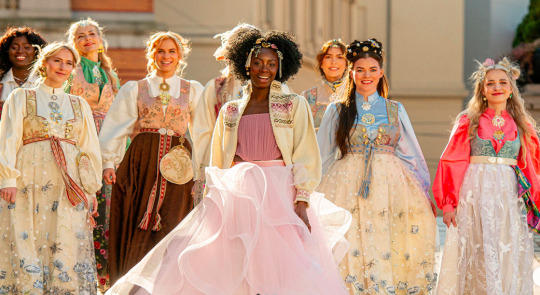
(btw I'm officially rescinding the statement I made in the fantasistakk post, that Embla is "less extravagant", cause this past year they've Really been Cooking)
I wasn't really sure where to even begin answering this ask, since it's such a massive topic, but I hope I at least some of this information is useful :P
#vitpost#bunad#fantasistakk#Maybe later I'll do a breakdown of popular fantasistakk silhouettes and what regional tradition they're inspired by?
5 notes
·
View notes
Text
Hello, here’s some more about me. Also! My commission sheet will be below!
For those who don’t know, most of my art is on Instagram(theebirblover), it’s my main platform, so if you want to see more then do check it out! I may post repeats on here so if you’d rather keep my art a surprise, then that’s fine too!
My name is Amber, but do call me Birb! Or Ambirb. Whichever works.

This is gonna be Moral Orel style because that’s my current obsession at the moment. Sorry not sorry. You’ll see a lot of that from me. Also I know little to nothing about tumblr.
About me:
I am mainly a self taught artist. I started back in elementary and it’s been a big part of my life since then. I started digital art about 7 years ago but only have started it constantly maybe 3-4 years ago.
Hobbies and Interests:
Bones(Vulture Culture sort of thing), Toxic and non toxic plants, symbolism, Christianity(yeah it sounds weird I get that. Especially since I’m not Christian. Or anything really. I just find it interesting to research.), Art, all sorts of fashion, History, Parrots and other avians, Psychology, Horror, and lots lots more!
Favorite colors:
Baby blues, Dull/moody blues, Periwinkle, and black.
Here’s the full body image! Me and my darling boyfriend in the Moral Orel style! We would not last in that town.

Other fandoms:
I enjoy of, course, Moral Orel, Borderlands, Fallout, Camp Here and There, Re-animator, Overwatch(ik), Stardew Valley, and there probably more I’m forgetting.
Ocs:
I have ocs that I hope to share with you all. They are non fandom and belong in their own story/universe, but sometimes I’ll draw them in certain fandoms for fun! It is one of my dreams to make a future webcomic, We Deceitful. That’s sort of a place holder name, but I might keep it.
Commission Sheet:

Do dm me on Instagram, here, or if you have my discord form mutual servers, that works too!
Also I am looking for lil friend groups to talk about my interests 😊 especially for Moral Orel.
Anyway! That’s all! If you made it this far, than you very very much for taking your time out of your day to read this. Ty!!
#meet the artist#moral orel#about myself#about me#me in moral orel style#moral orel fandom#commission#art commisions#commissions open
24 notes
·
View notes
Note
hiiii :3 I wanted to ask, where do you get the stuff you post here? I'd love to be able to find stuff to submit/use as drawing inspo, but I don't really know where to look
GREETINGS! Finally getting around to answering this BUT here are the most common ones I use :)
VOGUE Runway! Has collection pics for pretty much every new major designer collection as well as some lesser known ones and some old shows. You need to make an account bc Conde Nast is annoying about letting you view their content but it's free
Pinterest! Generally if you look at a lot of fashion content there you start getting even more of it in your feed and it helps you find some pretty wild stuff. I recommend starting by searching stuff like "90s supermodels", "90s runway fashion", designer names, etc.
Old streetwear magazines like FRUiTS. It's kinda hard to find scans but they're out there!
DAZED Fashion (dazeddigital.com)
Watching the red carpet whenever there's a big pop culture event like the MET Gala
Researching eras of fashion history and specific styles/brands/pieces/designers like Nudie Cohn, Pierre Cardin, etc.
Searching up runway/fashion tags here on Tumblr!
There are specific brands/online shops that are good to look out for, like AREA NYC, Lirika Matoshi, and Fashion Brand Company
There are some indie designers on Depop who make really cool stuff but it can be a bit hard to find them
45 notes
·
View notes
Text
i’m (regrettably) back on tumblr
i used to have a blog on here when i was like 12 for the show inside job and i felt like coming back on impulse so here i am :)
howdy!! i’m riley, welcome to my blog <3
i’m 14, enfp or entp depending on who i’m talking to and from england but i want to move to vegas when i’m older
i’m a most likely asexual lesbian, a demigirl and my pronouns are they/she.
i love
cowboys/cowgirls
history in general
poker
the state of nevada (😭)
red dead redemption (i’ve been hyperfixated on it for months, i’m getting an xbox for my birthday so i can *finally* play)
i listen to loads of different types of music but i especially love elton britt, marty robbins, hozier, sufjan stevens, herb alpert and the tijuana brass, glen campbell, dion, the five stars and dean martin
film/filmmaking (my favourite movies are brokeback mountain, rope, 1917 and oppenheimer)
south park
media analysis
cooking
the paranormal
dragons den
poetry
fallout (???) i’ve seen the show and liked it but don’t really know anything about it besides tha
i’m also trying to start a vintage poker chip collection but idk if that counts as an interest
makeup/fashion
and probably a ton more that i’m forgetting. on this blog i’ll just post stuff related to my interests, specifically the west and the ideas for stories/ocs i have.
i would absolutely love to make some friends!! lmk if you want to talk i would rather not befriend adults though.
i have (self diagnosed with a lot of research/evidence) ocd, c-ptsd and potentially adhd i get pretty attached and reply really quickly once i know you. if you struggle to talk then i’m good at carrying conversation but i just love talking to people so feel free to say whatever 😭
my love language is doing projects/creating shows/books/movies with people so lmk if you want to do something like that with me, i highly doubt anyone will but i have so many ideas for stuff so i’d love to create something with someone

#elton britt#cowboys#cowboy#cowgirl#cowgirls#south park#hozier#sufjan stevens#marty robbins#rope 1948#1917#dean martin#dion#nevada#las vegas#poker#history#filmmaking#red dead redemption#glen campbell#the five stars#fallout#oppenheimer#brokeback mountain
1 note
·
View note
Note
I don't want to sound dumb but whats a dirndl?
You don't sound dumb. Don't worry. :3 Its a a folk dress. (folk fashion) coming from germany, I believe. You see it at oktoberfest (but I don't drink). From my understand its "festival" wear and you can see it during germany festivals outside of oktoberfest. I think too because I've seen wedding dirndls (which are beautiful) they could also be worn at weddings. Although I could be wrong. I'm still in the process of researching. Here's some links: https://absolutemunich.com/what-is-a-dirndl/ https://www.oktoberfesthaus.com/blogs/okt/39279873-the-history-of-lederhosen-and-dirndl https://www.alpenclassics.de/trachten-guide/the-dirndl.html
I will say for tumblr, a word of warning: be really careful looking up dirndls on here. There's porn/kink/fetish blogs that like to reblog/repost this stuff due to cleavage (ugh. yeah lets sexualize peoples bodies. =/ Yuck yuck yuck. ) and the fact women are holding typically *huge* beer glasses. Some "dirndls" too more look like something from Legs Avenue or other halloween-ish brands so do sorta go for the dirndl look, but they do slightly miss it. (like very small apron from my understanding is more costume-y. Less folk fashion focused.) Along with exposed shoulders and very short skirt/dress typically are more associated with being "like" a dirndl. (costume) But this is my understanding. I'm not an expert & I'm not german. (I'm slavic polish, and irish and indigenous. xD) It's just been a style of dress i've been really keen in learning about. >w<;' But you can browse the folk fashion tag and I'll see them sometimes in that tag. I really like the folk fashion tag, cause it exposes me to other fashions from around the world like Norwegian Bunad's & some polish and slavic fashions, among other things. Its a safer tag too. The other thing I'll do is also look for dirndls via google image and post them myself that way. But I sometimes might be incorrect on the silhouette myself. (I'm not always right!) But yeah. =3
1 note
·
View note
Text
I’m baaaack ;)
Tumblr, its been a while. Like a really long time. I was all over this site back in 2010-2015 reposting collages of British youtubers and hoarded an embarrassingly large gif folder on my desktop to add to my short quippy text posts. But alas its the year 2022 and I’m back, 6-7 months off of my leave from Twitter (I said it was gonna be a short break but I haven’t been back since, who knows if I will?) and I’m intrigued to be back here. I don’t know what I’ll do here but I won’t start limiting and editing myself just yet.
I’m excited to talk about anything and everything under my mysterious new persona. I guess as a general introduction I’m trying to pursue just a few interests (which include but are not limited to)
Video games
History
Mental Health
Loving all the aesthetics but never committing to any in my actual life (because $ and executive dysfunction)
Archives
Writing
Watercolors
Raging against the machine that is capitalism
Books
Fashion
Sustainability
Obscure research topics
Food
Stationary/stickers
Making lists and then rewriting those lists in a different order to make my brain feel like it accomplished something
Pokémon cards
Animals
Living in a lighthouse that I’ve converted into a big twisty library and coffee shop
Is this interesting to people? I don’t know but it gave me an excuse to use my new LED backlit keyboard and make lots of satisfying *clickity clacks* that gives me that sweet sweet serotonin.
Anyway I hope you enjoy whatever I end up doing here :)
1 note
·
View note
Text
The whole franchise is wrong babe they didn’t even try.
Hoop skirts were 20 years out of fashion in 1899 and the leg o’ mutton sleeves were already on the way out. V. Birchwood has a video about the fashion in this movie that I haven’t seen yet but I know will be good: https://m.youtube.com/watch?v=l8Ibspr_FtQ
youtube
And Karolina Zebrowska made one about the first movie: https://m.youtube.com/watch?v=ZA8AfYiPiR8
youtube
I haven’t seen the new movie (because I disliked the first one), and couldn’t find a screen cap of the dress you’re referring to, but this ball gown

Is definitely more of a late 80s style with that draping on the skirt. Here is an evening dress from 1899 for comparison: https://www.google.com/amp/s/fripperiesandfobs.tumblr.com/post/674208406191636480/evening-dress-1899-from-the-cleveland-history/amp it’s subtle but Enola’s dress seems to be worn with a bustle and this one is only worn with some padding. Maybe when they said crinoline they ment bustle? Because bustles like the lobster tail had slowly gone out of style by 1899).
This red dress below is a quintessential 1980s look with layered skirts and a bustle that goes straight out from the end of the bodice. This sort of layering and draping is no where to be found on a fashionable lady at the turn of the century. The extra volume in the back of a late Victorian or early Edwardian gown is achieved with wider gores or pleats or gathers at the back of the skirt, not a wire under structure. It also looks like most of the extras are wearing bustles. Really the most chronically appropriate outfits on Ebola is the blue ensemble with culottes or ‘secret pants’ (tumblr will not let me imbed these images I have no idea why) and the white dress she wears at some point, which is really more Edwardian with that slight pigeon bust. The men’s outfits also look a little off to me but that’s not my area. Any way, your research is 100% correct and you have every right to be confused by this stupid franchise.

Victorian fashion question
So: Enola Holmes 9 is set in October 1899. Ms Springer mentions that hoop skirts slowly got out of fashion. Now we have a dressing scene for enola where she puts on the „newest most modern dress“
It has: puffed sleeves, ruffled fabric at the chest, and ruffled fabric in the back of the dress - we can assume this is a lobster tail.
But lobster tails where already out of fashion 1899, it was the last year people actually wore them and puffed sleeves only started to come up 1892… so is the dress wrong? Or is my research wrong?
#victorian fashion#fashion#enola holmes#acd sherlock holmes#enola holmes 8#fashion history#historical fashion#sewing#image#images#why is it so hard to add images where I want them#hopefully it’s not too confusing which photos I’m referring to#image id#Youtube
24 notes
·
View notes
Text
Here Are Some Fat Positive Activists, Educators, Therapists, and Artists to Know!
First and foremost, the pioneer of organized fat activism:
• Bill Fabrey (he/him)

Bill Fabrey, a self-proclaimed fat admirer, founded NAAFA (the National Association to Advance Fat Acceptance) in 1969 after gaining an understanding of the day-to-day oppression and discrimination faced by his wife, Joyce. Fabrey founded the organization in hopes to raise awareness of weight stigma, criticize biased studies, and increase overall acceptance and accessibility to fat Americans. He is considered one of the pioneers of the fat liberation movement, and is heavily involved to this day.
• Judy Freespirit, Sara Fishman, Lynn McAfee, Ariana Manow, & Gudrun Fonfa (she/her for each)
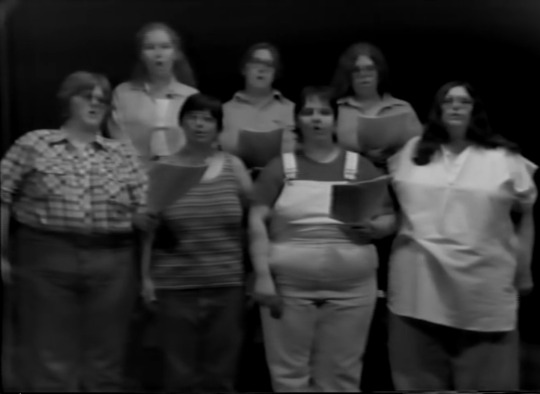
(Members of The Fat Underground, 1979)
Fat, radical, feminist members of NAAFA! Their agenda was much more aggressive than NAAFA’s, and eventually they broke off and formed their own group called The Fat Underground, which acted as a catalyst in the creation and mobilization of the fat liberation movement. Based in LA in the 1970s, the Fat Underground did not fight to change discriminatory laws but rather discriminatory thoughts and practices in different aspects of society, which included those of doctors and other health professionals who perpetuated the unhealthy habits encouraged by diet culture. In 1973, Judy Freespirit and Alderbaran published the “Fat Liberation Manifesto” which establishes that fat people are entitled to what they were denied on a daily basis: “human respect and recognition.” The other objectives then outline the commercial exploitation of fat bodies by both corporations and scientific institutions. (x) I will go into more detail about the Fat Underground in my next post, “The History of Fat Activism!”
• Dr. Lindo Bacon (they/them), PhD
(no photo)
Creator of the concept of HAES (Health At Every Size).
Dr. Bacon is best known for their paradigm-shifting research and advocacy upending the weight discourse. They have mined their deep academic proficiency, wide-ranging clinical expertise and own personal experience to write two best-selling books, Health at Every Size: The Surprising Truth About Your Weight, and the co-authored Body Respect: What Conventional Health Books Get Wrong, Leave Out, or Just Plain Fail to Understand about Weight. Both are credited with transforming the weight discourse and inspiring a hopeful new course for the fat liberation movement. Dr. Bacon holds their PhD in physiology, as well as graduate degrees in psychology and exercise metabolism. Dr. Bacon formerly taught at City College of San Francisco, in the Health Education, Psychology, Women’s Studies, and Biology Departments. A professor and researcher, for almost two decades Dr. Bacon has taught courses in social justice, health, weight and nutrition; they have also conducted federally funded studies on health and weight and published in top scientific journals. Their research has been supported by grants from the United States Department of Agriculture and the National Institutes of Health. A truly great pioneer in medical health research!
https://lindobacon.com/ | HAES | IG
• Aubrey Gordon, a.k.a. Your Fat Friend (she/her)
(no photo)
Aubrey Gordon writes about the social realities of life as a very fat person, previously publishing anonymously as Your Fat Friend. She is the author of What We Don't Talk About When We Talk About Fat. Her work has appeared in The New York Times, Lit Hub, Vox, Gay Mag, and has been covered in outlets around the world. She also hosts the podcast Maintenance Phase, in which she and cohost Michael Hobbes debunk and decode wellness and weight loss trends. Her articles are incredibly heartfelt and enlightening. You can read all of them at www.yourfatfriend.com !!
@ yrfatfriend on IG & Twitter
• Sabrina Strings (she/her), PhD
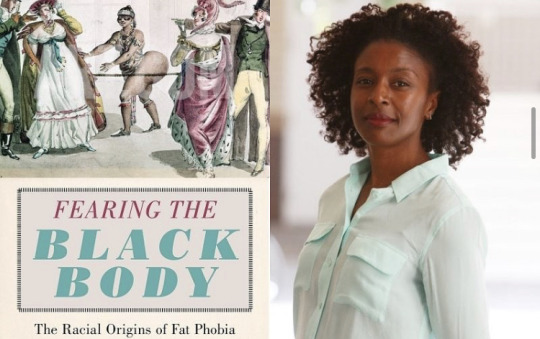
Sabrina Strings is an associate professor of sociology at the University of California, Irvine and the author of Fearing the Black Body: The Racial Origins of Fat Phobia, which exposes fatphobia’s roots in anti-blackness. Strings contributed an opinion story to The New York Times titled “It’s Not Obesity. It’s Slavery.” With Lindo Bacon (creator of HAES), she coauthored “The Racist Roots of Fighting Obesity,” published in Scientific American. Strings has a BA in psychology and an MA and PHd in sociology. This book is #1 on my to-read list!!
https://www.sabrinastrings.com
• Hannah Fuhlendorf (she/her), MA LPCC NCC

Hannah is a highly educated and experienced counselor whose work focuses on self acceptance, eliminating the effects of internalized oppression, and practicing through a HAES lens. She is a fat liberationist who puts out educational videos daily. Hannah is also married to a healthcare professional, and the two of them are working toward making the medical field more accessible to fat people in their local community, and offering education on how to be fat allies. I really admire Hannah and the work that she does!
@ hannahtalksbodies on IG and TikTok
• Tracy Cox (she/her)
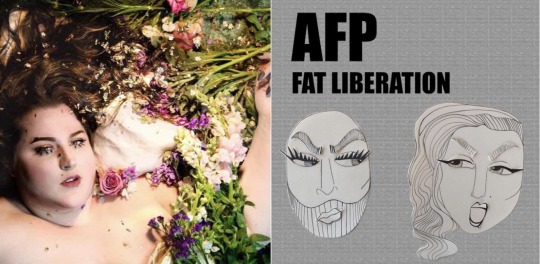
Tracy is an award-winning performer and artist, who co-created the web series “Angry Fat People” with Matthew Anchel, which takes a pop culture approach on serious issues faced by fat performers. She has been interviewed by the New York Times on fat politics and accessibility, and currently has a huge following on IG where she unpacks fat performance, fashion, and politics. You may know her as the creator of the ‘fat vanity’ trend on TikTok!
@ sparklejams on IG & TikTok
• Da’Shaun L. Harrison (they/them)

Da’Shaun is a non-binary abolitionist, community organizer, and writer. They are currently a managing editor and columnist at Wear Your Voice Magazine. They travel throughout the United States and abroad to speak at conferences, colleges, and lead workshops focused on Blackness, queerness, gender, class, religion, (dis)abilities, fatness, and the intersection at which they all meet. Da’Shaun is the author of the book Belly of the Beast: The Politics of Anti-Fatness as Anti-Blackness, which is expected to be published in July 2021. They have an incredibly enlightening social media presence as well!!
@ dashaunlh on IG and Twitter
• Lauren Buchness (she/her)
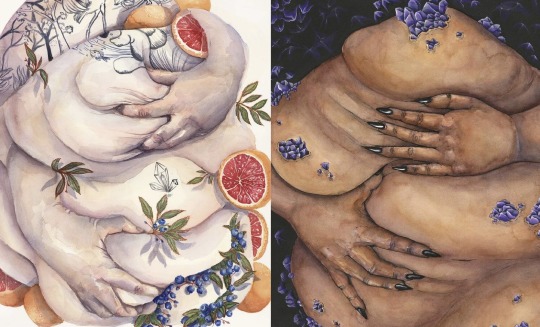
Lauren Buchness is one of my favorite artists. She’s a contemporary artist and fat activist based in Tucson, Arizona. By combining painting & performance, she aims to question Western standards of beauty and create conversations that alter preconceived notions about the fat body. Go check out her gorgeous work!!
@ ladybuchness on IG and TikTok
If you’re interested in learning about diet culture and intuitive eating, check out
Shana Minei Spence (she/her), MS RDN CDN
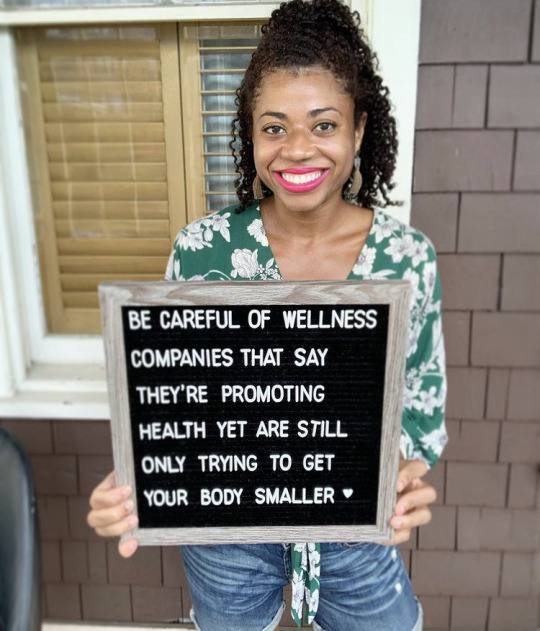
Shana is a Registered Dietitian Nutritionist who opposes food restriction and encourages intuitive eating! She spreads food positive daily messages on her platform. She used to work in fashion, but she left after being dissatisfied with the industry and went back to school to become involved in food policy and public health. She offers counseling on a HAES approach. I have much respect for Shana!
@ thenutritiontea on IG
And right here on tumblr (who was my personal introduction to fat lib) -
@ bigfatscience !!!
An anonymous fat liberationist. They share so many great resources, diving head-first into the scientific research of weight and health, they’ve found that the relation between the two is extremely complex. They tackle the biases of research in a system that profits off of fatphobia, and they offer a fat positive perspective based on scientific studies. Their blog serves as an easily accessible resource for fat folx and fat activists who want to learn about fat positive science to support their own personal interests/activism. Thank you for your work, bigfatscience!! (if you have questions for them, you will have a greater chance of getting a response with anon off!)
• Sonalee Rashatwar (she/they), LCSW MEd

Sonalee is an award-winning clinical social worker, sex therapist, and grassroots organizer. They’re a superfat queer bisexual non-binary therapist and co-owner of Radical Therapy Center. Sonalee is specialized in treating sexual trauma, internalized fatphobia, immigrant kid guilt, and South Asian family systems, while offering fat positive sexual healthcare. Go, Sonalee!!
@ thefatsextherapist on IG
• Fat Rose (org)
Fat Rose organizes fat people, building a more radical fat liberation movement in strong relationship with other social movements, such as anti-fascism, anti-ableism, and anti-racism. Check them out on Facebook!

fatrose.org
Honorable IG mentions: (Some anti diet culture specific blogs in here, as well)
@fatangryblackgirl @msgigggles @thefatphobiaslayer @bodyimagewithbri @saucyewest @fatpositivetherapy @fatlippodcast @chairbreaker
BOOKS
And here’s an amazing list of fat-positive book recommendations from HannahTalksBodies!
Science & Health:
Health at Every Size by Lindo Bacon PhD
Body Respect by Lindo Bacon PhD and Lucy Aphramor PhD, RD
Secrets from the Eating Lab by Traci Mann PhD
Anti-Diet by Christy Harrison MPH, RD
Fat Liberation:
Fearing the Black Body by Sabrina Strings PhD
Fat Activism by Dr. Charlotte Cooper
Fat Politics by J. Eric Oliver
The Fat Studies Reader by Esther Rothblum (Editor) and Sondra Solovay (Editor)
Fat Shame by Amy Erdman Farrell
Self Acceptance:
The Body is Not an Apology by Sonya Renee Taylor
Things No One will Tell Fat Girls by Jes Baker
Eating in the Light of the Moon by Anita Johnson PhD
Happy Fat by Sofie Hagan
You have the Right to Remain Fat by Virgie Tovar
Thanks for reading! Please feel free to share this list of resources!
Image descriptions below.
1. [ID: A black and white photo of Bill Fabrey, a straight-sized, balding white man with thick black glasses wearing a suit and tie, standing at a poduim in front of a sign that reads, “NAAFA”. Beside the image is another photo of Fabrey, from his left side.]
2. [ID: A black and white photo of seven fat, female and gender non-conforming members of The Fat Underground, performing a recital.]
3. [ID: The cover of Sabrina Strings’ book, Fearing the Black Body: The Racial Origins of Fat Phobia. On the cover is an illustration of four upper-class white people in fancy colonial period clothing showing shock and disgust at a Black woman’s exposed body. Beside the book cover is a photo of Sabrina Strings, a straight-sized Black woman with dark brown curly hair wearing a blouse.]
4. [ID: Hannah Fulhendorf, a fat, white woman with straight hair dyed blue, wearing a black tank top and holding her shoulder while smiling brightly and looking into the camera.]
5. [ID: An artistic picture of Tracy Cox, a fat, white woman with long, straight brown hair, laying topless on a bed of flowers. There are flower petals placed strategically in her hair on her skin, and along her lower eyelid. Beside that image, is an image of the album cover for Angry Fat People, picturing two angry faces made out of white paper against a grey background. In the top left corner, black, bolded text that reads “AFP” and “FAT LIBERATION”.]
6. [ID: Da’Shaun L. Harrison, a fat, non-binary Black person with a beard, glasses, and long dreadlocks, wearing a shirt that reads, “TO BE VISIBLY QUEER IS TO CHOOSE YOUR HAPPINESS OVER YOUR SAFETY. -DA’SHAUN HARRISON” against a natural backdrop of autumn leaves.]
7. [ID: A watercolor painting by Lauren Buchness of a white and tattooed fat body, hands caressing abstract rolls of fat with wild blueberries and grapefruit between folds. Beside it is another Buchness watercolor painting of Black hands with long sharp nails, caressing the midsection of a fat Black body, with purple crystals growing out of the skin.]
8. [ID: Shana Minei Spence, a straight-sized, Black woman smiling with bright pink lipstick and her long wavy hair pulled back, wearing a floral pattern shirt and jean shorts. She is holding small marquee that reads, “BE CAREFUL OF WELLNESS COMPANIES THAT SAY THEY’RE PROMOTING HEALTH YET ARE STILL ONLY TRYING TO GET YOUR BODY SMALLER” and a heart symbol.]
9. [ID: Sonalee Rashatwar, a superfat, South Asian non-binary person with short black hair, wearing a long floral dress, standing in front of large glowing text that reads, “BIG GIRL ENERGY” against a coarse-textured wall.]
10. [ID: A circular logo with a red fist in the center, with text surrounding it that reads, “FATTIES AGAINST FASCISM” with roses separating the word “RESIST”. Beside it is another image, of eleven fat and superfat activists, standing and sitting on mobility scooters, holding fists and middle fingers in the air, wearing T-shirts and holding banners that both read, “FATTIES AGAINST FASCISM”. In front of the group is a large cardboard sign that spells the acronym “F.A.B.” which stands for “Fat Antifascist Brigade”.]
#fat activists#people#fat liberation#fat activism#fat positivity#resources#anti diet culture#anti-diet#anti-fatphobia#anti-racism#haes#masterpost
2K notes
·
View notes
Text
My Dream Girl Journey🍭🎀

I have been wanting to start my dream girl journey for a while now and I finally started it on Nov 30!
My dream girl is honestly just the better version of myself.
She is loving, kind & smart. She is good at math & gets straight A’s in school. She is a successful entrepreneur. She is skilled in a lot of different fields. But her speacialties are art, music, fashion, history & film. She speaks her mind but only when she needs to. She can handle her temper. She is never seen unkempt & is effortlessly stylish. She takes care of herself, by eating well, working out & having good skin. Like a mix of Cher from clueless and Moesha.
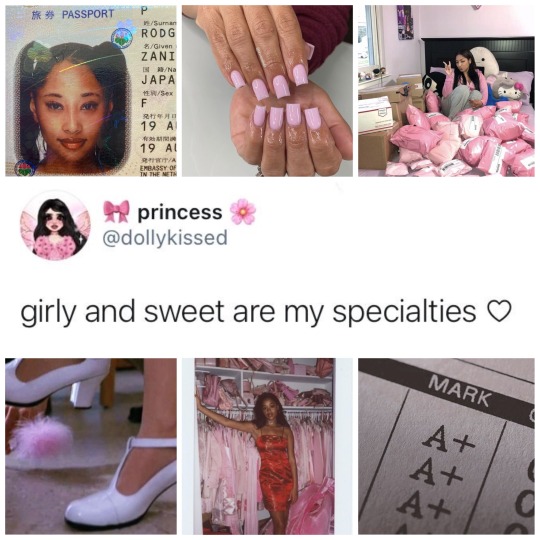
5 Qualities to Create Her:
(I could only think of 5 qualities but I might add more)
Her specialities are art, music, fashion, history & film
She is a successful entrepreneur
A straight A student
Like a mix of Cher from clueless and Moesha
She takes care of herself, by eating well & working out & has good skin
She’s effortlessly stylish

December ♡
“Her specialities are art, music, fashion, history & film.”
Daily tasks:
-Bring sketchbook everywhere
- Draw something at least ONCE a day
-create and write a cohesive album
- NO PINTEREST only use for reference and not inspo only express creative ideas through works of art (making music, drawing, creating short film.) No outside influences unless u NEED it.
-Really focus on getting my skills better in sewing and drawing, Learn the basics again
-take time to learn about Black history and history in general
-Research fashion: watch runways, movies, YouTubers, only look at fashion inspo!
-begin coming up with ideas/concepts for short films. Start learning how to create short films. Write scripts, get better at editing etc.
-Make content! Work on YouTube and TikTok make video ideas, try to have an upload schedule etc
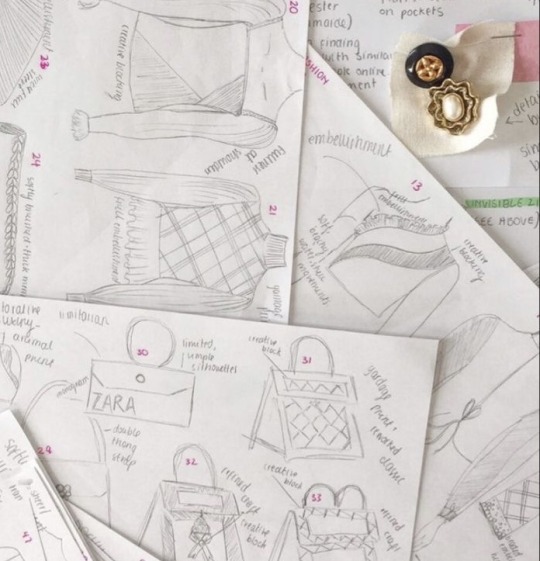
January ♡
“She is a successful entrepreneur.”
Daily tasks:
- work on & create new designs daily
-ONLY go on the internet for inspiration (Pinterest, tumblr, YouTube insta, movies and shows etc.)
This plan will take place throughout my dream girl journey but applies to this section specifically:
1. Send out designs and size chart to manufacturer and communicate weekly
2. Start working on branding (packaging, website, logo, brand board, colors, draw etc.)
3. Create website & work on business plan
4. Slowly get supplies (While checking on production and creating new designs.)
5. Get samples back and review, and start mass production. While mass production has started start promoting with samples
6. Once mass production is done get ready for launch day!
7. Launch website! ♡
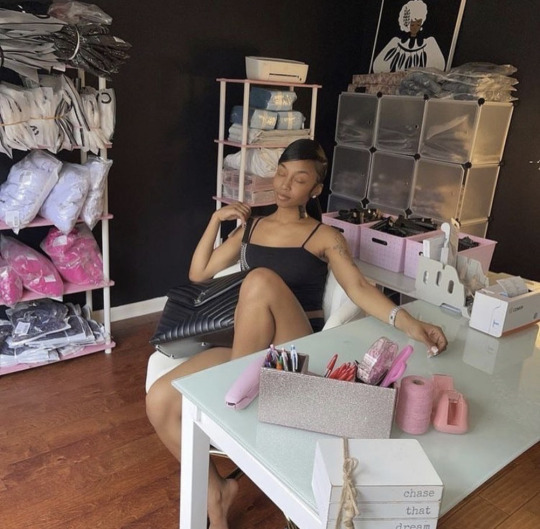
February ♡
“A straight A student.”
Daily tasks:
- take an hour a day to study times tables and look over notes in all classes
-NO TIKTOK
-do a lot of math tutoring to make sure you understand
-read or draw every time you are bored (try to limit use of the internet)
-create study techniques that ACTUALLY work for you

March ♡
“She’s like a mix of Cher from clueless and Moesha.”
Daily tasks:
-work on poised checklist
-think before you act and speak
-romanticize life
-deep clean room and closet
-forcefully control your anger
-really focus on self care
-save money
-establish personality and overall presence
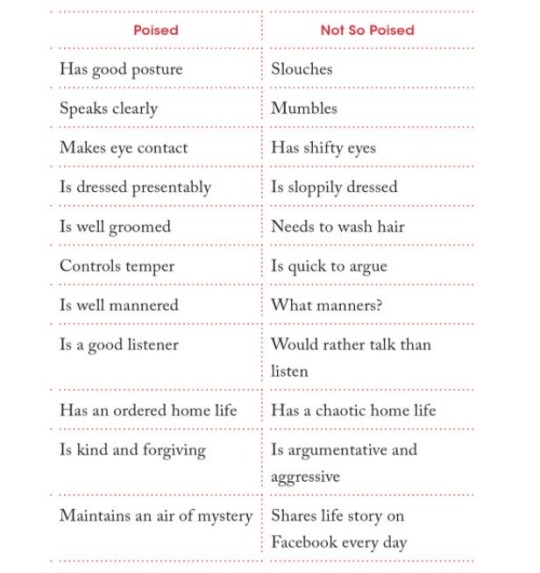
I don’t know if I will do the whole 12 months because I could only think of 5 qualities. But if I do I will update this post.

127 notes
·
View notes
Text
The Emergence of the Word "Magick" and Why I Don't Trust Y'all Who Use It
Okay, I'm gonna preface this with a disclaimer: I am not an academic in any way, shape, or form. This is a tumblr post, and it will be framed as such. I'll try my best to site relevant sources, but in the end, I'm just a person on the internet. Do your own research and come to your own conclusions.
It's almost completely impossible to spend any significant time on witchblr and not see the word "magick" at least once. And everytime I do, it makes me want to rattle my FUCKING cage. Especially from people who are trying to help educate other witches on this platform, because I believe they should know better.
Because when you use the word "magick", you are evoking Aleister Crowley, a name famous in witchcraft communities. And that's not a good thing.
So, who was Crowley? In the simplest terms, he was an occultist. He wrote some of the most influential works in witchcraft theory and occult practice of his time. He was a writer, a scholar, a mountaineer, and an irredeemable racist. In many of his works, you will find specifically xenophobia, antisemitism, and sexism. Phrases like "the objectionable type of jew [with] the gross, hooked, pendulous proboscis; the thick, flabby, moist lips; the patient stupid eyes, and timid, hunted gait". It's fucking nauseating. The amount of hate he had for jewish people is off the charts. I could share more examples, but it's literally making me sick having to read that shit, and I'm not subjecting anyone else to it.
As for the counts of racism and sexism. Well.
"Where Islam and Christianity meet in open competition, as in some parts of Africa, it is found that only the lowest type of Negro, such as is accustomed to arrange matters with conscience by hanging a rag on a piece of stick, accepts Christianity."
"White men and women must choose between these alternatives: Will they yield, content to be the black man’s slave, after having been his master? or will they stand to, and reply by an energetic spiritual reaction, which will restore the threatened equilibrium of the races?"
"The doctor was a Bengali named Ram Lal Sircar, a burly n****r of the most loathsome type. I am not fond of Benaglis at the best and he as the worst specimen of his race I have ever seen."
"Do we call woman whore? Ay, verily and amen, she is that; the air shudders and burns as we shout it, exulting and eager."
"Just as a woman's body is deformed and diseased by the corset demanded by Jagannath fashion, so is her soul by the compression of convention, which is a fashion as fitful, arbitrary, and senseless as that of the man-milliner, though they call him God, and his freakish fiat pass for everlasting law."
Okay, but what does this have to do with modern usage of the word "magick"? Well, the first recorded use of "magick" (with this particular spelling) was by Heinreich Cornelius Agrippa, who was a bit batshit for altogether different reasons (and which is a discussion for a whole different post). Agrippa was a 16th century occultist, and the writer of the Three Books on Occult Philosophy - works which are considered by many to be the foundation of western witchcraft. He was not bigoted (as far as I can tell), just kind of 'out there'.
Anyways. "Magick" made its way back into the mouths of mainstream witches by means of Crowley when he founded Thelema, his weird cult that he believed himself to be the prophet of. The teachings of Thelema would go on to influence L. Ron Hubbard in founding Scientology and Gerald Gardner, the "Father of Witchcraft" (but really, just wicca).
So. Not great. Crowley and his Thelema cult would repopularise "magick" in the modern day by way of his bigoted teachings, paving the way for it to make its way into the vocabulary of 21st century witches today. Supposedly, this alternate spelling was to help differentiate witchcraft from stage magic, like pulling doves out of your sleeve or sawing your girlfriend in half. I don't know, I've never seen a magic show. Either way, this spelling is completely unnecessary. Like, I don't think that anyone would read a book on kitchen magic and mistake it for a Penn & Teller act.
Using the word "magick" in your writings is a choice - one that is full of history and hurt. I just want you to weigh that choice and really meditate on the worth of using this word in your craft for the ☆•°aesthetic°•☆, and realize what exactly you're bringing to mind when you do. If you do use it, know what it really says about you and the things you value when you do so.
Sources:
https://www.britannica.com/biography/Aleister-Crowley
http://www.arcane-archive.org/faqs/crowleyracistfaq.php
https://hermetic.com/crowley/confessions/index
https://lightwarriorslegion.com/magick-definition-and-etymology/
https://www.learnreligions.com/magic-and-magick-95856
The Equinox by Aleister Crowley
The Law is For All by Aleister Crowley
#witchblr#witchcraft#magic#magick#wicca#aleister crowley#racism tw#antisemetism tw#misogyny tw#bigotry tw
180 notes
·
View notes
Text
Some facts about Elizabeth Tudor and Robert Dudleys children in my Tudors OT3 universe written as an in universe tumblr history facts post and inspired by @theladyelizabeth
Anne (Nan)
Dark haired, dark eyed ‘she resembles her maternal grandmother very much’ (re her hair - apparently it went to her feet when down)
Her favourite sweet was an early form of Turkish Delight made with rosewater and also apparently apricot tarts.
Was “a better rider than even her parents”
Spoke at least seven languages aside from English and possibly even more - her Aunt in Law Queen Mihrimah said that her Turkish was ‘that of one born to it’ and the Persian Ambassador ‘delighted in conversing with her about poetry’
Loved chess
A poet herself - even though we only have one book of her poems we know there were more.
Apparently her Uncle George (The Duke of York’s) favourite niece who may have taken over his role as spymaster and certainly took a role as advisor in her cousin Turhan’s court.
Inherited the title of Duchess of Pembroke from her mother and maternal grandmother.
Robert Dudley loved and adored all his children equally but Anne was also absolutely his favourite child and she was definitely John Dudley’s favourite grandchild (he once straight up held her on his lap during a council meeting and would always sneak her sweets)
Her maternal grandfather Thomas’ called her ‘Nanette’ and ‘Little Astra’ (Little Star) and her other maternal grandfather King Henry said she was ‘bright and bold’
She and her namesake grandmother taught each other languages and passed music back and forth - Queen Anne was there at her birth and was even present for the birth of Nan’s first child.
Henry (Harry)
Was the one who took after his maternal namesake grandfather
Loved black clothing because he thought it made him look hot - would accent with golds and white and was always interested in fashion.
Consummate courtier - several starring roles in masques but also served on his cousins council when Turhan became king.
Inherited his fathers Dukedom but he left the management of it to his twin because quote ‘I am not one for the country or the business of farms’ and concentrated on court.
A jouster who was offered so many favours when he went to joust and then had to politely decline them until his next match.
Said his older sister was way smarter than him thank you very much.
Thomas (Thom)
Soft Country Boy Who Wrote A Gardening Book
Possibly because he’s Harry’s twin and like, Harry is not the person with the chill, Thom very deliberately does not go to court. He’s not into it, though he is close to all his cousins.
Also he’s a diplomatic advisor because he’s very good at that on the level of managing his brothers estate(s) - so good that people really want to move there.
Loves Dogs (like his dad)
Robert (Robbie)
Adventurer. Wrote an early travel novel that’s very entertaining.
Travelled the entirety of the Silk Road, lived in Istanbul for a while, also lived at his cousin Maryam’s court in Persia, sailed all over.
Researched sagas at his Aunt Margaret’s court in Denmark
Total naval nerd who helped build up the navy in general
Straight up wrote a very funny satire as a rebuttal to some of the early restorationists
Mary (Marian/Marie)
Surprise Last Child
She actually lived to a 100 - dying in 1680 having lived through this universes version of the English Civil War and then the restoration of the monarchy.
Sheltered so many people during the Restoration Regime - particularly Jewish families and also smuggled in books and smuggled people out of England.
Told the Restorationist King to Go Fuck Himself in so many words.
#tudors ot3 verse reference#ot3: political power trio#lil and her ridiculous aus#I did actually look up Turkish Delight and concluded that it was probably something that Mihrimah could have bought to England#(not called that at the time)
16 notes
·
View notes